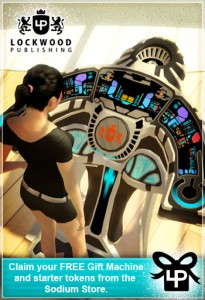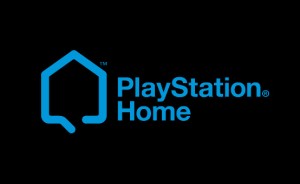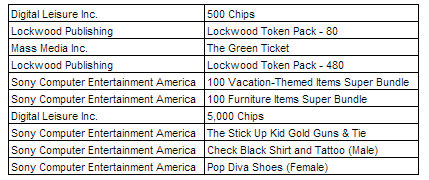SCEA Top Ten Home Items (By Units Sold) For February, With Consumer Trend Analysis
Information courtesy of GlassWalls, Home Community Specialist; commentary provided by NorseGamer, HSM Editor-in-Chief
Joe Straczynski tells the story of the time he, as a young and struggling writer, called Harlan Ellison and asked for advice as to why his work wasn’t selling.
“All right, I can tell you why it’s not selling,” Harlan replied tersely. “It’s crap. STOP WRITING CRAP. If it wasn’t crap, it would sell.”
Every so often, this thought runs through my head when I look at these top-ten lists that SCEA is gracious enough to provide the community with. Sure, there are virtual commodities which are quite remarkable and should have received more visibility — why more people didn’t purchase the Scariachi Band is beyond me — but in general, these lists seem to be a fairly accurate reflection of what the consumer base in general is looking for.
Doesn’t mean I agree with what’s on these lists. But it means that after a few years of consumer data, you start to see some patterns emerge. Behavior trends. So let’s take a look at the February list and dive into what it might mean.
1. Indirect marketing can be very effective.
Digital Leisure, whom we just recently interviewed, has a gold mine on their hands with the Casino. But they face the same conundrum every developer faces: how to stimulate long-term return traffic. Their solution? Tongue-in-cheek “updates” to the free hotel room personal estate. And let’s not forget that Hellfire Games utilized a similar tactic recently, by allowing for indoor antigravity (for a limited time) in order to drive traffic to Novus Prime. This sort of indirect marketing targets brand visibility over direct incentive; the idea is to keep the developer’s attraction at the forefront of your thoughts rather than simply going for discounts or some other economic tactic. And it works. One of the most brilliant ideas I ever heard was for Sony to set a building on fire, somewhere in a core Hub space (Sportswalk, perhaps). Just burn it to the ground for a few days. No marketing, no explanation, nothing. But it would generate buzz. People would come to check out the charred remains. People would talk about it. And some of that would bleed over into the space’s attractions. This pattern would continue once something new was put in place of the old building’s remains.
2. “Tokenizing” money works.
 SealWyf, in her superlative article about the Mansion, talked at length about how currency is easier to spend if it’s tokenized into something other than what we use in the real world. Look at the list closely: half of the items on that list are microtransaction tokens. Digital Leisure, Mass Media and Lockwood have all figured this out, and they are consistently raking in the cash. They are the only third-party developers on this list. The lesson here is simple: offer your own internal currency of some sort. My bet is on Hellfire Games developing an internal currency for Novus Prime and any new products they bring to market later.
SealWyf, in her superlative article about the Mansion, talked at length about how currency is easier to spend if it’s tokenized into something other than what we use in the real world. Look at the list closely: half of the items on that list are microtransaction tokens. Digital Leisure, Mass Media and Lockwood have all figured this out, and they are consistently raking in the cash. They are the only third-party developers on this list. The lesson here is simple: offer your own internal currency of some sort. My bet is on Hellfire Games developing an internal currency for Novus Prime and any new products they bring to market later.
3. People like to give gifts.
February had Valentine’s Day, so is it really any surprise that Lockwood tokens performed so well? And the reason why Lockwood tokens consistently perform well — which are only valid for the Gift Machine, and are separate from Sodium Credits — is because there’s always a new holiday around the corner, with a new theme to exploit. I’m legitimately surprised that other developers have been so slow to respond to this obvious monetization formula, although SCEA has made it a habit of introducing gifting into their new personal estates.
4. Simplistic gaming experiences are more broadly accessible.
It pains me to type this, because it goes against what I personally enjoy, but there’s no getting around what the data suggests: simpler games drive more revenue in Home. I absolutely love Sodium2 and Novus Prime, and I’ve spent considerable money on both. But what consistently dominates the top-ten lists? The Green Ticket. Midway. Those basic carnival games. And now Digital Leisure’s chips are following basically the same formula. Keep in mind these lists are compiled by number of units sold — not price — which means that Home’s most consistent gaming attractions are the really basic ones. It also points out that the chip machine — suggested by Keara and others back during the EA Poker Room days — is indeed a damn smart idea, considering that a lot of people were buying five-thousand-chip packages.
5. Item bundles elevate visibility in a crowded marketplace.
There was a time — and it wasn’t that long ago — when you could more or less stay on top of every single virtual commodity in Home. I remember leafing through store after store, searching for something new that I might’ve overlooked. Nowadays, however, there’s just so much content coming in that it’s virtually impossible to keep track of it all unless you religiously follow AlphaZone4. So the easiest way to throw a spotlight on commodities that might otherwise be overlooked? Bundle ‘em together. Make it a value proposition. These item bundles are consistently appearing on Sony’s top-ten lists, and it wouldn’t surprise me in the slightest to see more of this trend. If you have a commodity that was budgeted to sell X-number of copies, and it fell short of its projected goal by the end of its initial sales cycle, then you stand nothing to lose by bundling it and realizing some incremental revenue gain.
6. Personal estates and clothing may be reaching a saturation point.
There are no personal estates on this list. At all. Despite the numerous estates released in recent weeks, there seems to be either less demand for them from the consumer base, or there were so many estates released that they effectively “split the vote,” so to speak. With new clubhouse skins arriving with greater frequency, will we see a shift in consumer behavior away from personal estates? And how will LOOT’s portable EOD commodity (which I’m predicting will be a smash hit in Home and break sales records) affect estate sales, when you could simply pack more people into a clubhouse?
 As for clothing, I know it sounds crazy to suggest that virtual clothing may be hitting a saturation point when thirty percent of Sony’s list consists of clothes, but those of you who follow these lists know that clothing used to be a much more prominent source of consumer spending, and female clothing in particular used to do quite well. Conversely, today, male clothing is once again outperforming female clothing.
As for clothing, I know it sounds crazy to suggest that virtual clothing may be hitting a saturation point when thirty percent of Sony’s list consists of clothes, but those of you who follow these lists know that clothing used to be a much more prominent source of consumer spending, and female clothing in particular used to do quite well. Conversely, today, male clothing is once again outperforming female clothing.
Considering that Home’s audience is predominantly male, it surprised me last year to see female clothing items so prominent on the top-ten lists, as well as outperforming male clothing. Are there simply that many (semi-)secret cross-dressers with money to burn in Home? And, if so, are the virtual closets sufficiently full now? Or, in fact, are the crossdressers (and legitimate females) simply being outspent by gamers, now that Mass Media and Digital Leisure are offering freemium microtransaction gaming experiences?
What can we expect for March? Well, it’s hard to predict the future when Home can drop a hot new virtual commodity upon the consumer base with only a day or two of advance marketing, but we can reasonably expect chips, tokens and tickets on the next list. It wouldn’t surprise me to see a bundle on there as well. And there will likely be some piece of virtual clothing which grabs enough attention to merit a slot. But that still leaves a lot of ground for the Next Big Thing to come in and make a splash. We’ll know soon enough.




 LinkedIn
LinkedIn Twitter
Twitter
I think the new skins for the clubhouses that are also personal spaces will be on the list if they are out in time. I particularly like the oriental themed Plum one. I don’t doubt the new mechs that Lockwood just added will be too, they priced them way down from the usual ones, that should add more user purchases.
When it comes to clothing, if the developers or Sony really want to see a women’s clothing article hot the top ten they should add a long formal skirt or two that blends well with other tops than the one it is made with. The more mix ability they give us the more we will buy them. These types of bottoms will be a huge hit for them.
Yaay, Burbie! When Lockwood had their Poll, I suggested they give us various skirt lengths & suggested mix & match. I *love* the Drey line, but I don’t always want cold knees. LOL
I think the problem with the personal spaces is overload. Too many spaces in too short a time span. Seriously, we’ve been averaging one per week for a month now; even more if you factor in clubhouses.
I think they’d be better off sticking to a set schedule for personal spaces. Say, one or two per month, max.